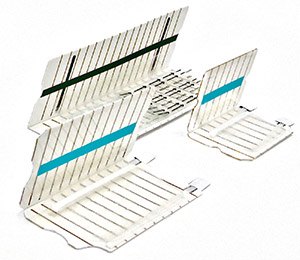Michael A. Bogdan, MD, FACS
Roger W. Cason, MD
2301 Plastic Surgery
2301 Westgate Plaza
Grapevine, TX 76051
Phone: (817) 442-1236
Fax: (817) 531-5851
Monday–Friday: 9 a.m.–5 p.m.
Embrace® Advanced Scar Care
from: Neodyne Biosciences
The most recent major advance in scar treatment addresses the component that mechanical stress contributes to scar healing. A significant portion of the basic science research that justifies this modality originates from Michael Longaker and Geoffrey Gurtner from Stanford University. Both are well respected Plastic Surgeons who are bench scientists, and are contributing greatly to practical advances in wound healing. Neodyne Biosciences is bringing the device to market, which has received FDA clearance for use under the name Embrace® Advanced Scar Therapy.
Get to know our board-certified Dallas-Fort Worth plastic surgeons Dr. Michael A. Bogdan and Dr. Roger W. Cason. With decades of combined experience, they received their education and fellowship training at some of the most prestigious institutions in the country, including Stanford, Duke, and New York University.
The device works by unloading the tension across a scar which can contribute to “over zealous” scar formation (know as hypertrophic scaring). For it to work, it needs to be applied once the incision is healed (approximately 2 weeks after surgery), and used continuously during the active component of scar healing (6 to 8 weeks). It is quite expensive (for an abdominoplasty, it is around 10% of the total cost of surgery), and not everyone requires this level of intervention to achieve a good scar. The decision to use this intervention is a problem for patients who never had a surgical scar, and have no baseline to judge how they tend to heal.

Here are some of my suggestions:
- For patients who have a previous surgical scar (such as a c-section) that healed with a hypertrophic (raised) scar, it is worth the expense to use Embrace®.
- For patients who want the best result and are not concerned about expense, I would suggest using the product.
- For cost-sensitive patients with no history of abnormal scaring, I would recommend my old protocol.
I do believe this is the current “best” treatment for high tension scars, such as abdominoplasty incisions, and am happy to be able to offer this to my patients.
Please review the educational / marketing video on Neodyne’s website to help understand the basics of this product.
Please review some literature that supports the technology of this product:
- Gurtner GC, Dauskardt RH, Wong VW, Bhatt KA, Wu K, Vial IN, Padois K, Korman JM, Longaker MT Improving cutaneous scar by controlling the mechanical environment: large animal and phase I studies. Ann Surg. 2011 May 19.
- Wong VW, Akaishi S, Longaker MT, Gurtner GC. Pushing Back: Wound Mechanotransduction in Repair and Regeneration J Invest Dermatol. 2011 Nov; 131(11): 2186-96.
- Corr, DT, Hart, DA. Biomechanics of Scar Tissue and Uninjured Skin. Advances in Wound Care. March 2013, 2(2): 37-43.
- Wong VW, Rustad KC, Akaishi S, Sorkin M, Glotzbach JP, Januszyk M, Nelson ER, Levi K, Paterno J, Vial IN, Kuang AA, Longaker MT, Gurtner GC. Focal adhesion kinase links mechanical force to skin fibrosis via inflammatory signaling. Nature Medicine. 2011 Dec 11; 18(1): 148-52